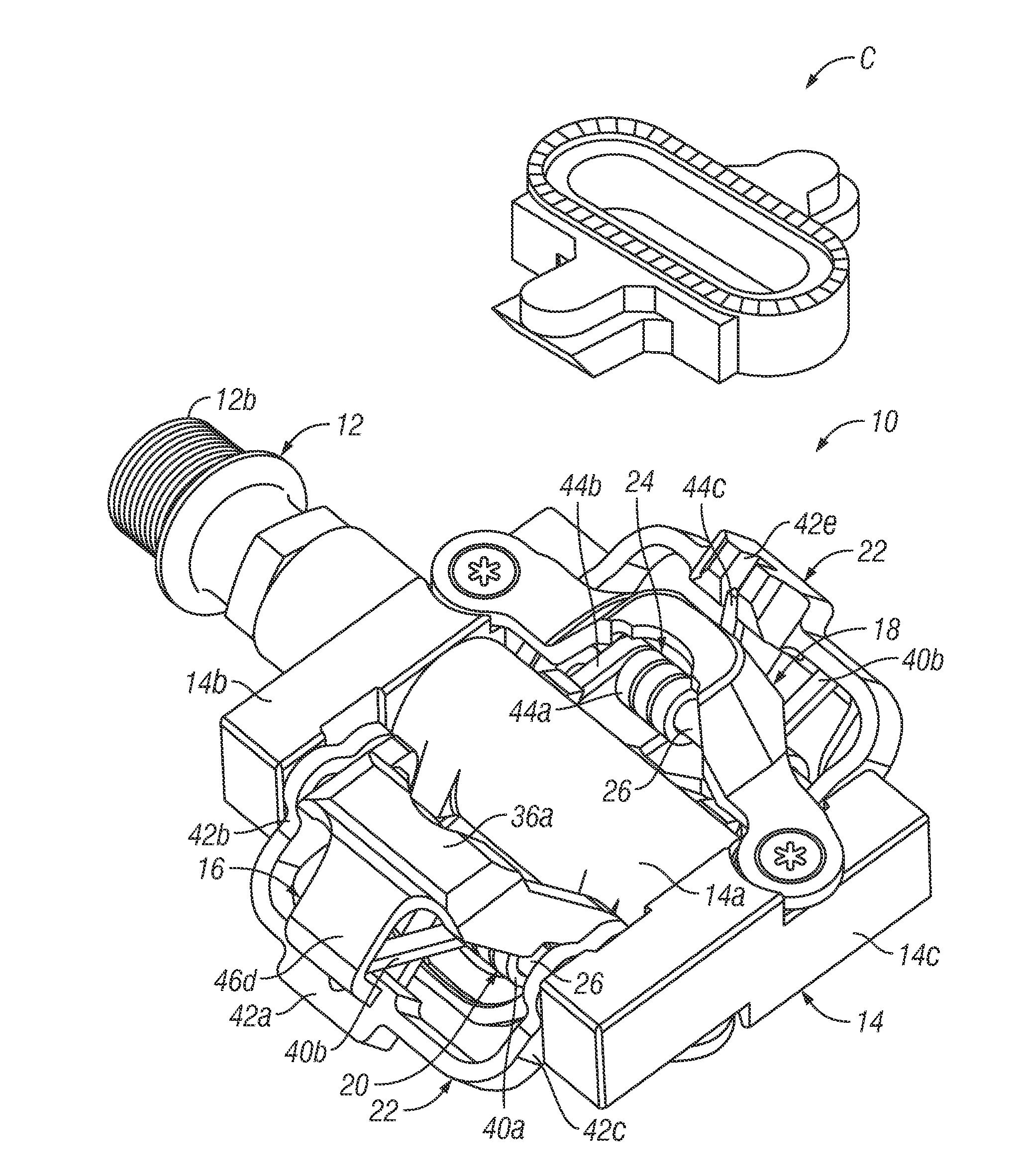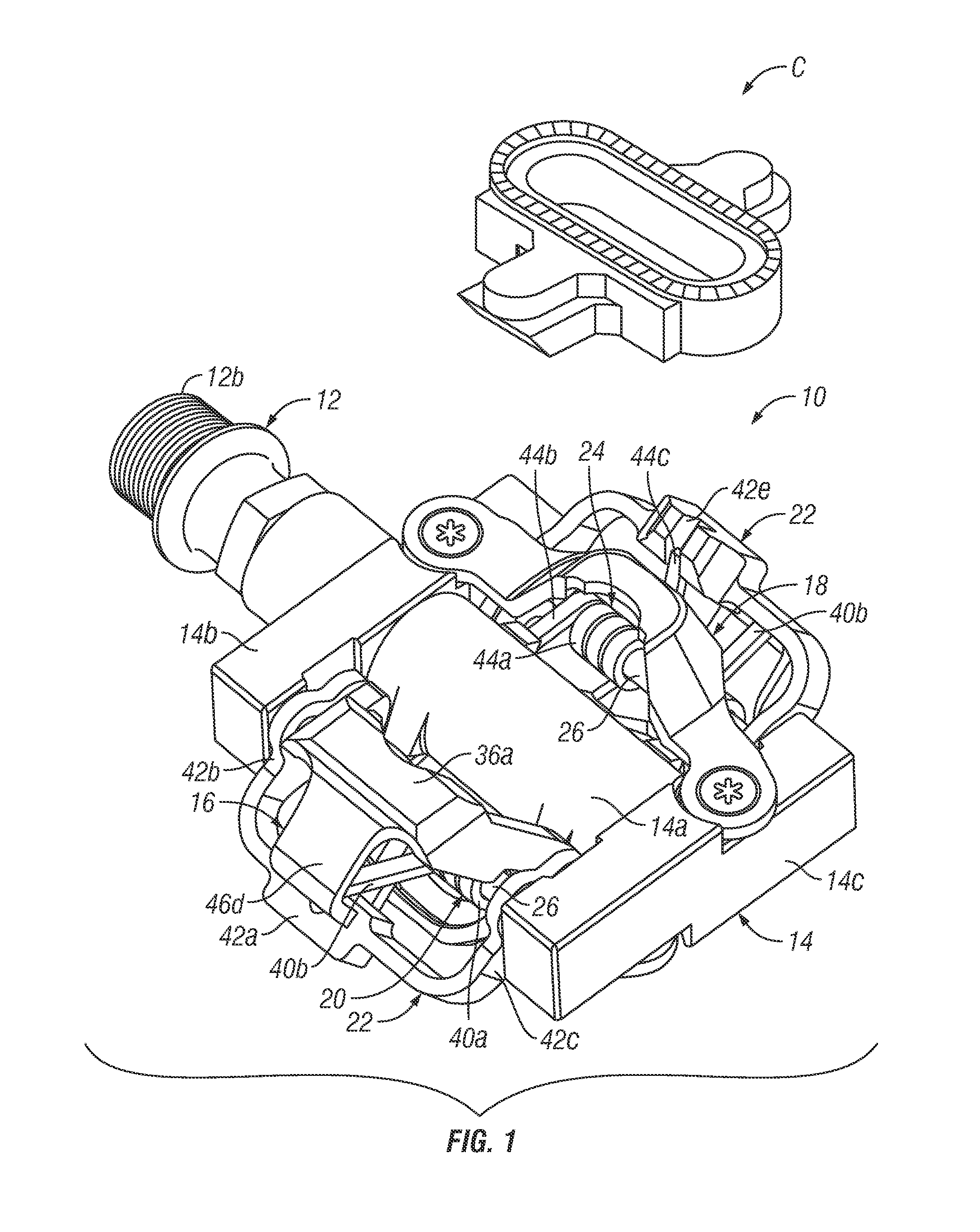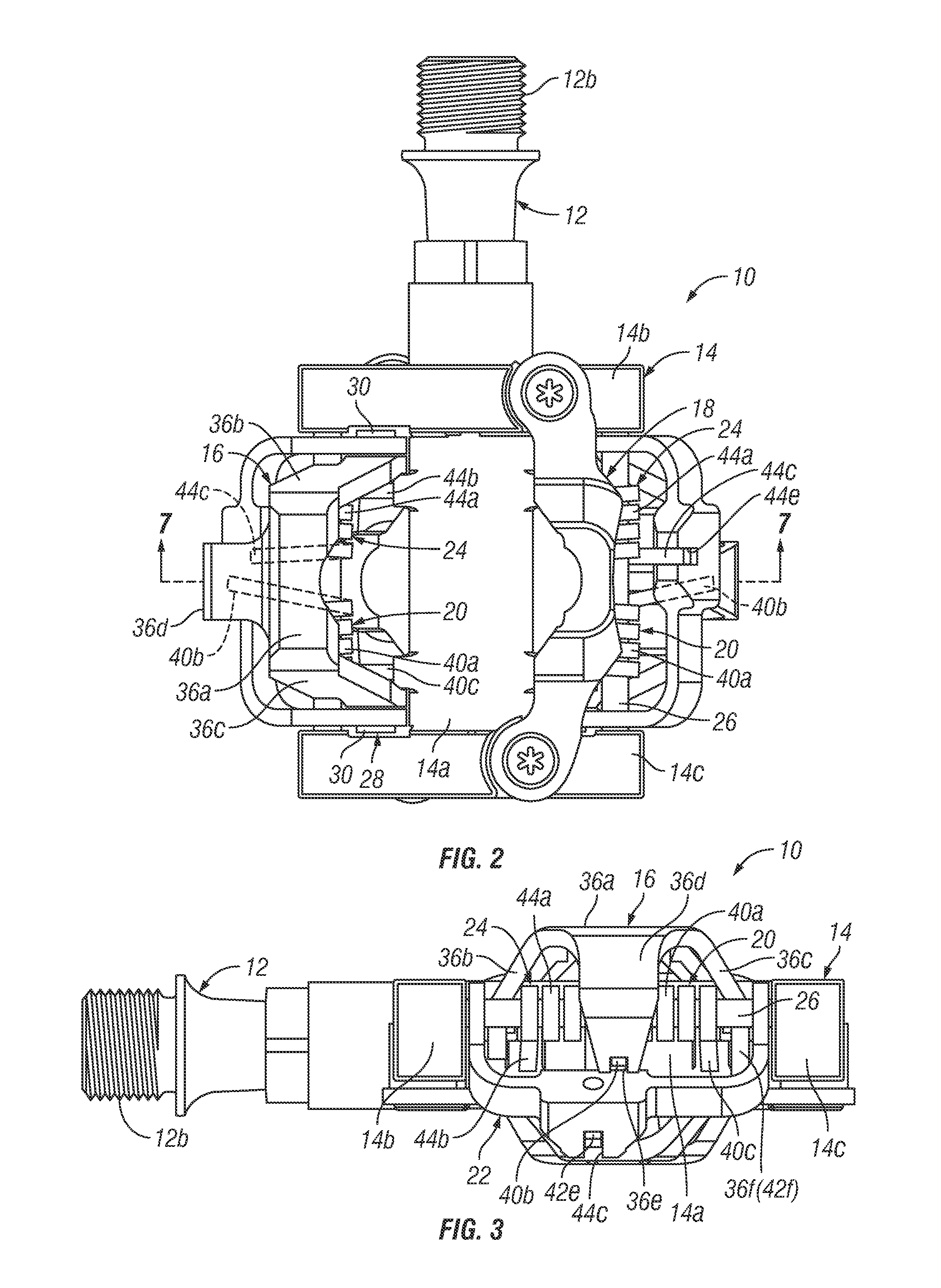Bicycle pedal
a bicycle pedal and pedal body technology, applied in the field of bicycle pedals, can solve the problems of accidental disengagement of the cle difficulty in step-in operation for some riders, and difficulty in removing the cleat from the bicycle pedal, so as to facilitate a relatively easy step-in operation and reduce the possibility of accidental disengagement of the clea
- Summary
- Abstract
- Description
- Claims
- Application Information
AI Technical Summary
Benefits of technology
Problems solved by technology
Method used
Image
Examples
second embodiment
[0060]Referring now to FIGS. 10-18, a bicycle pedal 110 in accordance with a second embodiment will now be explained. In view of the similarity between the first and second embodiments, the parts of the second embodiment that are identical to the parts of the first embodiment will be given the same reference numerals as the parts of the first embodiment. Moreover, the descriptions of the parts of the second embodiment that are identical to the parts of the first embodiment may be omitted for the sake of brevity. In other words, the descriptions and illustrations of the first embodiment also apply to this second embodiment, except as explained and illustrated herein. Furthermore, it will be apparent from this disclosure that parts of this embodiment that are identical or functionally identical will be given the same reference numerals as the first embodiment but with “100” added thereto.
[0061]The bicycle pedal 110 is similar to the bicycle pedal 10, except it includes a modified sub-...
PUM
 Login to View More
Login to View More Abstract
Description
Claims
Application Information
 Login to View More
Login to View More - R&D
- Intellectual Property
- Life Sciences
- Materials
- Tech Scout
- Unparalleled Data Quality
- Higher Quality Content
- 60% Fewer Hallucinations
Browse by: Latest US Patents, China's latest patents, Technical Efficacy Thesaurus, Application Domain, Technology Topic, Popular Technical Reports.
© 2025 PatSnap. All rights reserved.Legal|Privacy policy|Modern Slavery Act Transparency Statement|Sitemap|About US| Contact US: help@patsnap.com



